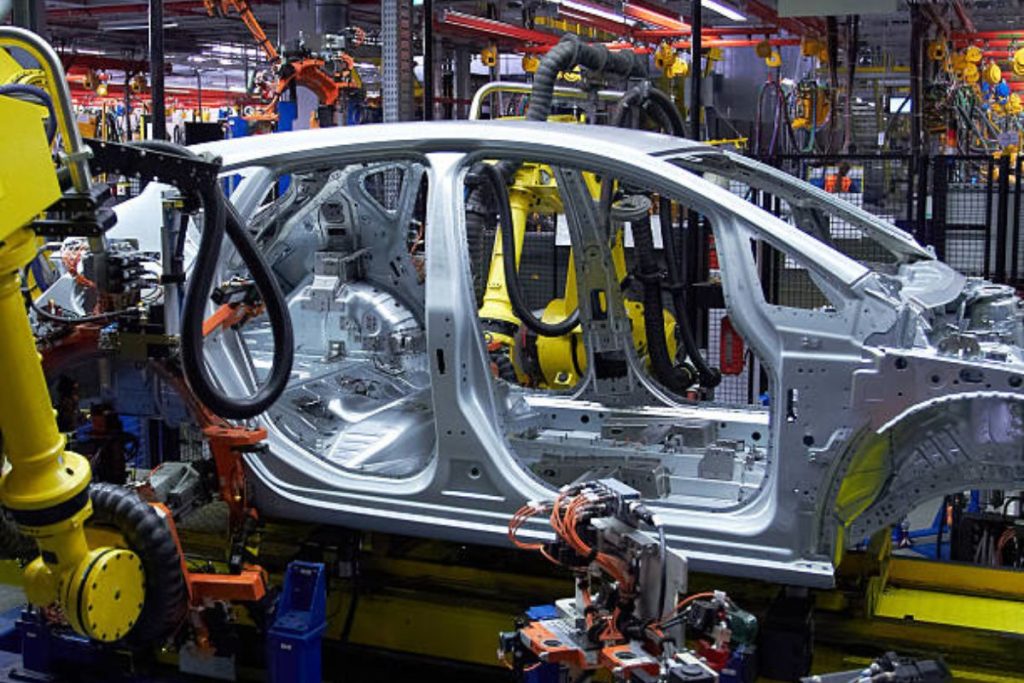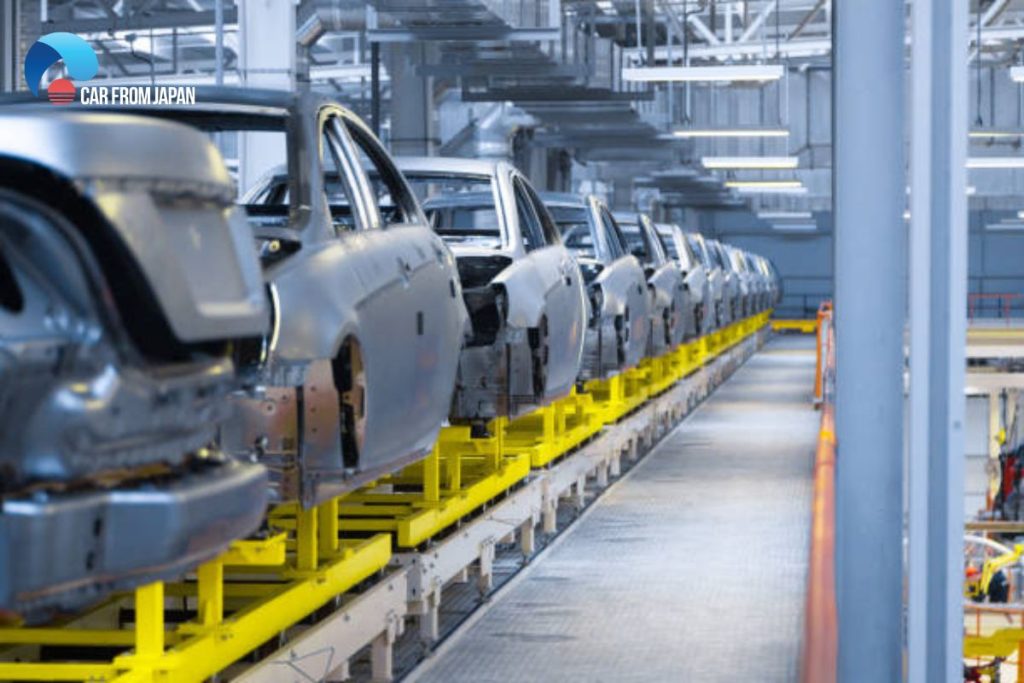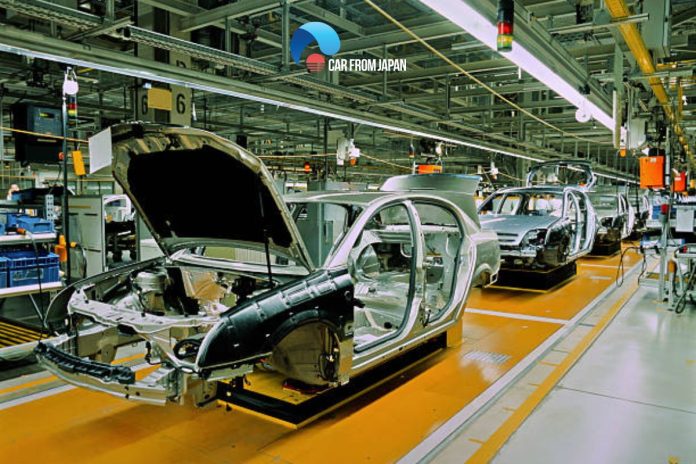How much does it cost to make a car? In a September 2012 article in Reuters, the writers claimed that GM was spending $89,000 to build a Volt and the company was losing $49,000 on each vehicle.
Bob Lutz, the man behind the engineering of the Volt, dismissed the article shortly after by calling the estimated amount of loss per car ‘preposterous. However, the original article created a buzz in the media and industry, leading to numerous speculations about the actual cost of making a car.
How Much Does It Cost to Make a Car?
No automaker reveals the actual figures. So, the final estimation depends on plenty of ‘ifs’ and ‘buts’. The general rule is that the larger the car and the bigger the production volume, the more cost-effective they are to manufacture.
Building a concept car or a limited number of exclusive versions is much more expensive than producing a large lot. When tens of thousands of similar models of a vehicle are produced in a factory, the pricing meter tends to go down.
But, how much does it cost to build a car? Well, it depends on two sets of expenses, fixed costs and variable costs.
It’s not possible to get an exact figure. According to the 2012 study Automobile Industry Retail Price Equivalent and Indirect Cost Multipliers, the car manufacturing cost breakdown is:

| Fixed Costs | Variable Costs |
| Research, development, engineering, and running the facilities – 16% of the total price | Labor cost |
| Marketing & supply | Raw materials and the prices of auto parts – 57% of the total price |
| Estimated sales tax for each car: 6.25% of the sales price | Average dealership markups per unit |
| Average advertising charges for each sold unit |
Here are the details of the expenses we have mentioned above.
Fixed Costs
Manufacturing a new model means a few years of mandatory research and development. It includes the cost of maintaining the facilities, testing prototypes, paying the salaries of the staff, finding suppliers, and some other related things.
So again, how much does it cost to make a car do you think right now? It can cost hundreds of millions, and it will increase if you decide to send the prototype into production.
Retooling the factories and retraining the workers (in case it’s a completely new product) will add to the figures.
The fixed costs will be the same whether you manufacture one unit or a million. But, the expenses will go down at the time of producing the second generation of these models.
For example, the fixed costs for the 2nd Gen Toyota Prius were much less than the 1st Gen models because they incorporated many technologies developed for the 1st Gen batches.
These costs lie at the base level of any item-making process, and barely change over the years.

Research and Development cost (R&D)
A lot of prominent car manufacturers have spent millions to billions of dollars on the Research and Development department before any model’s birth.
The most visible fixed expense for automakers is research and development. The R&D department is in charge of the design and manufacturing strategy, as well as determining all specifications, safety ratings, and so on.
In addition to focusing on a single model, every manufacturer has a general research budget for future goods.
Cost of operations
The automobile operational expenses can easily cross into various areas. However, although the variable cost is related to increasing facilities to boost sales volume, maintaining these facilities is a fixed cost.
Rent would be the most expensive operational cost of a simpler firm, such as a grocery shop. Automobile manufacturers don’t have much of that, but they do have to pay governmental levies and eco-taxes.
Cost of marketing and supply
Manufacturing an automobile is a massive operation that needs a massive amount of labor and resources. Manufacturers will require a robust support staff to handle recruiting and supply deals for various materials to get there.
Of course, the supplies vary in price, but you still need someone to make the purchase, so that element is set.
Minor charges
The insignificant charges encompass everything from office supplies and furnishings to corporate automobiles and other such items. They are minor in comparison to other expenses. But when all of the minor expenses are added together, the total becomes considerable.
Variable costs
These are the expenses when you go into the production of the vehicle. These include the costs of raw materials, labor, maintenance, and utilities in the factories, and other related things. The costs will be proportional to the number of units manufactured.
Materials for car manufacturing
Tons of plastic, steel, aluminum, leather, wood, rubber, and a variety of other raw and processed materials are required for automobiles. Before becoming a usable automotive part, these materials must go through a variety of manufacturing steps.
The body and body panels, headlights, steering wheel, seats, dials, wires, engine, and pretty much everything else is manufactured in different facilities before being put on a single assembly line.
Labor
Regardless of how much of the process is automated via the use of machines and robots, the production of an automobile will always require manual labor.
The difficulty of the employment ranges from simple assembly line labor to specialized engineering and programming responsibilities, and so does the pay of the workers.
Production costs
If the factories are already established, the expenses are fixed; nevertheless, if the manufacturer is upgrading to the following generation, the assembly and production lines will need to be adjusted. Power consumption, which grows with output, is another expense.
Shipping fee
It takes a lot of logistics to move all of the disassembled parts across the world to eventually create an automobile. The weight, size, and distance these components and supplies must travel are all factors in transportation costs, and hence in production expenses.
FAQs on The Cost of Car Manufacture
We have already learned how much does it cost to make a car, but have you ever wondered why there is never public information on the exact cost of the process.
You’re asking why there aren’t specific figures for how much each step costs. The reason is simple: not only is the data proprietary, but there is so much that goes into the construction of an automobile that it would take months, if not years, for an expert in economics to make sense of it all.
Because of economies of scale, it’s impossible to even determine how much the manufacturer spends for tires and batteries, which have widely available retail costs.
The bottom line is that the only clear statistic we have is the gross/net profit margin, which does not account for all of the above criteria, but it does give us a reasonable notion of how much the manufacturer earns each sale.
How long does it take to completely build a car?
Many auto industry personnel and specialists are probably aware of how long it takes to construct a car, but even they recognize the process as magical, moving from a concept to a real-life, faultless, high-tech machine.
Several phases and variables might improve or slow the development of an automobile.
A typical car contains around 30,000 pieces. From welding to entire engine assembly to painting, it takes automakers roughly 17 to 35 hours to construct one mass-market vehicle after those elements are made and transported to the final manufacturing line.
What is the most expensive part of building a car?
The most expensive aspect of your automobile manufacturing process is the final assembly. Buying new parts will be the most cost-effective option if you are purchasing a new car.
Is it lawful in the United States to build your own car?
Customized cars have been popular among US gearheads and auto enthusiasts for decades. As a result, building your own automobile is allowed, and you can even buy a kit online. You may also customize the automobile to your specifications
Check out this video from the Benjamin Workshop to see the entire interesting process of him building his dream car:
In Conclusion
So, to wrap it up, making a car costs much more than just the visible parts and factory work. A lot of the expense also includes designing new features (R&D), complex engineering, getting parts from all over the world, running the factories, advertising, and meeting safety standards.
Therefore, the price tag on a new car covers all these hidden but essential steps, plus the car company’s need to make a profit. It really shows the huge amount of money, planning, and effort that goes into every single vehicle.




I don’t buy this. Raw materials are probably less than 1% of the sticker price. Back in the 80s an insider told me it was $2,000 per vehicle…didn’t matter what kind it was – sedan, compact, pick-up, SUV… $2,000 per car. Average new car price in 1985 was 11,000. That’s an 81% markup. A 2019 Expedition lists for between 59,000 and 72,000 – say 65K average… at 81% markup we can guesstimate that the cost of production was about 12K…max… And I bet that’s high… They’re ripping us off. Which is why the new car market is drying up.
I want to see how you make a car out of raw materials at no costs…..loooool
Total bull! Then make your own car if you think it’s so easy. Free market competition drives efficiency to levels that socialist dreamers can only dream of….